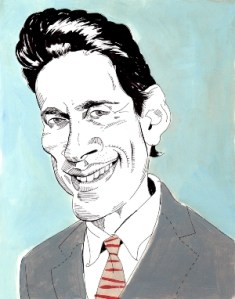The Power Generators: Douglas and Jody Durst on Generating Their Own Electricity at 1 Bryant Park and 1 WTC
By Jotham Sederstrom March 13, 2012 4:00 pm
reprintsDouglas and Jody Durst of the family-owned Durst Organization are well known in the real estate industry for their firm’s progressive stance on environmentally sustainable building practices. Last week, the cousins spoke to The Commercial Observer about co-generator power, a revolutionary, albeit costly, method of generating electricity in buildings they own at 4 Times Square, 1 Bryant Park and, soon, 1 World Trade.

The Commercial Observer: When did you first experiment with co-gen power?
Jody Durst: Our first experience with distributed generation was with our installation of fuel cells at 4 Times Square in 1999.
Was it still new technology in New York at the time?
Jody Durst: The technology itself wasn’t new, but the venue had never been done before, meaning that they were installed in a commercial office building in a metropolitan area instead of in a desert or some other place that had no utility infrastructure. They had installed fuel cells in hospitals but never office buildings.
And why had it never been in an office building? What was the hurdle?
Douglas Durst: Nobody had ever wanted to do it before.
Jody Durst: There were cost challenges, but the biggest hurdle was getting acceptance from Con Edison.
What was Con Edison’s fear?
Jody Durst: I suppose the fear they had was that someone else would be either creating power or delivering power.
Douglas Durst: Con Edison makes its money now by transporting electricity so if you’re generating it on site they don’t get paid.
And they didn’t like to think about a world where all building owners generate their own power over the course of Manhattan’s 400 million square feet of office space.
Jody Durst: That’s exactly right.
Have they since warmed up to the idea?
Jody Durst: No, not really. We experienced the same sort of hurdles from them with our co-gen installation at 1 Bryant Park.
That said, it sounds like the Durst Organization is going forward on other development projects that utilize co-gen technology, like 1 World Trade Center, for example?
Jody Durst: Currently we have two projects on the board and it remains to be seen. We were in the very early stages of two residential projects, and the co-gen aspects of those remain to be determined. But we are the adviser to the Port Authority at 1 World Trade Center. And, yes, it has two fuel cells there that we finally worked through the issues with Con Edison on. So, yes, there will be two fuel cells there.
If you could play devil’s advocate for a second, do you understand why Con Edison would be fearful of a world where real estate developers played utility provider?
Jody Durst: The issue that they raised is that in a power failure they want to ensure that when their men go to try to fix the problem on the grid that they’re not going to experience any problems. There’s got to be a fail-safe automatic transfer switch in order to keep power from our fuel cells from flowing back onto the grid. And so that is an accurate concern or a viable concern, but once you’ve demonstrated that you’ve taken precautions to prevent that from happening, they should appreciate that that infrastructure is in place. But they still always raise that as the major issue.
So love it or hate it, the Durst Organization will always be stuck with Con Edison?
Jody Durst: Yes.
Douglas Durst: Yes.
Will all developers have the ability to one day generate their own electricity, or is that a pipe dream?
Jody Durst: No.
Douglas Durst: It’s not that all the energy will be generated, but a significant portion of it will be. We’re seeing more projects looking at distributed generation.


